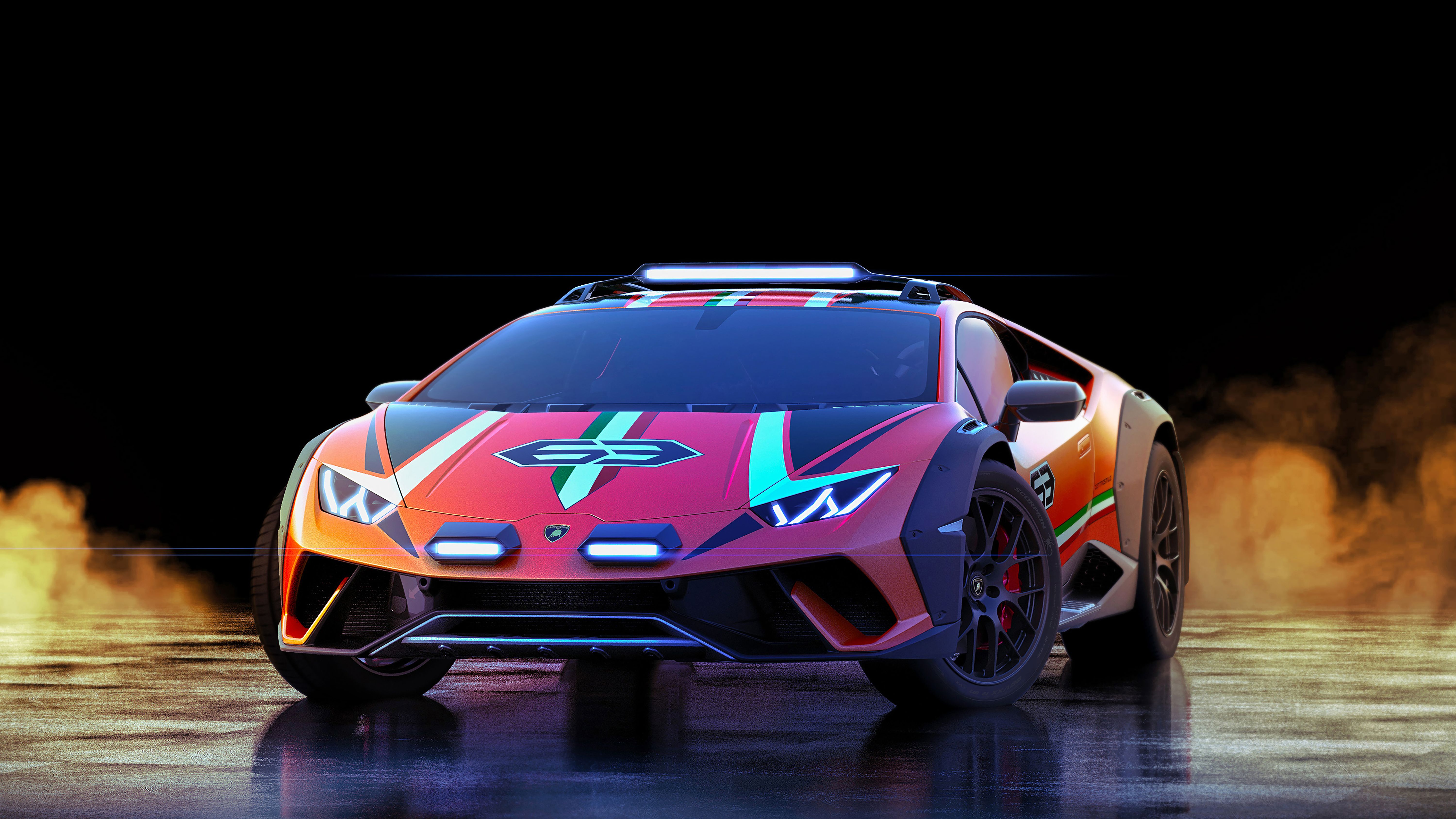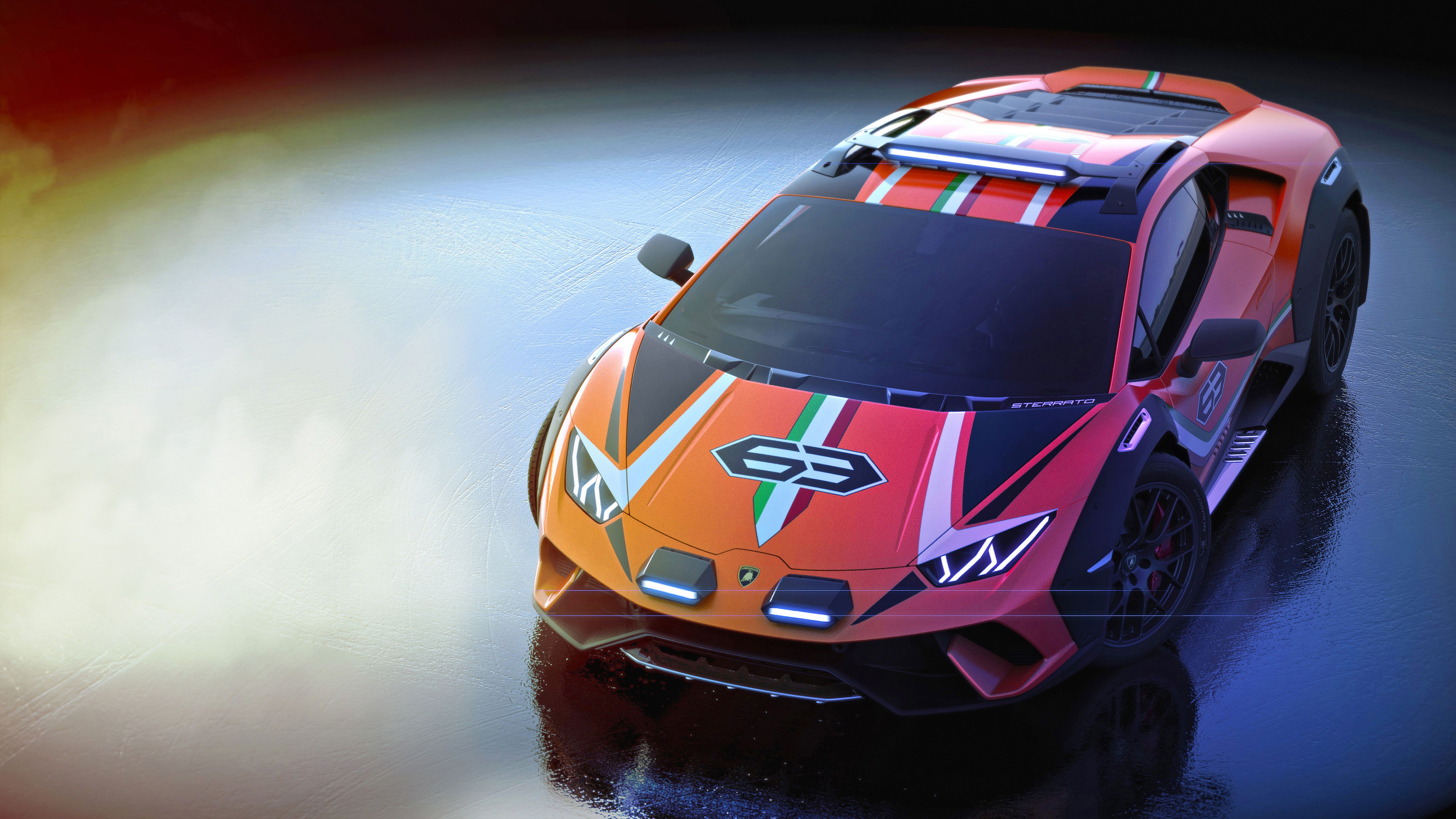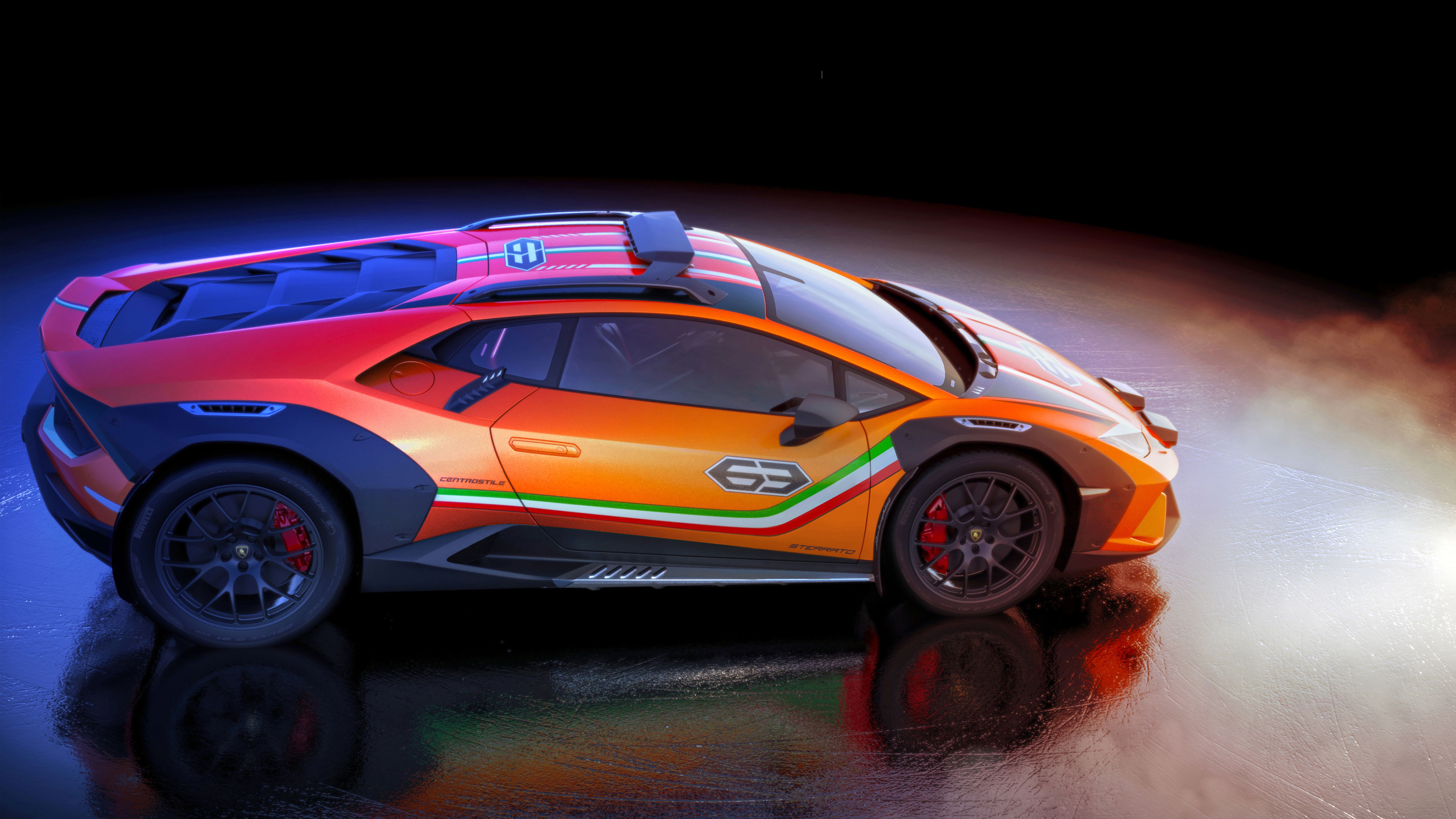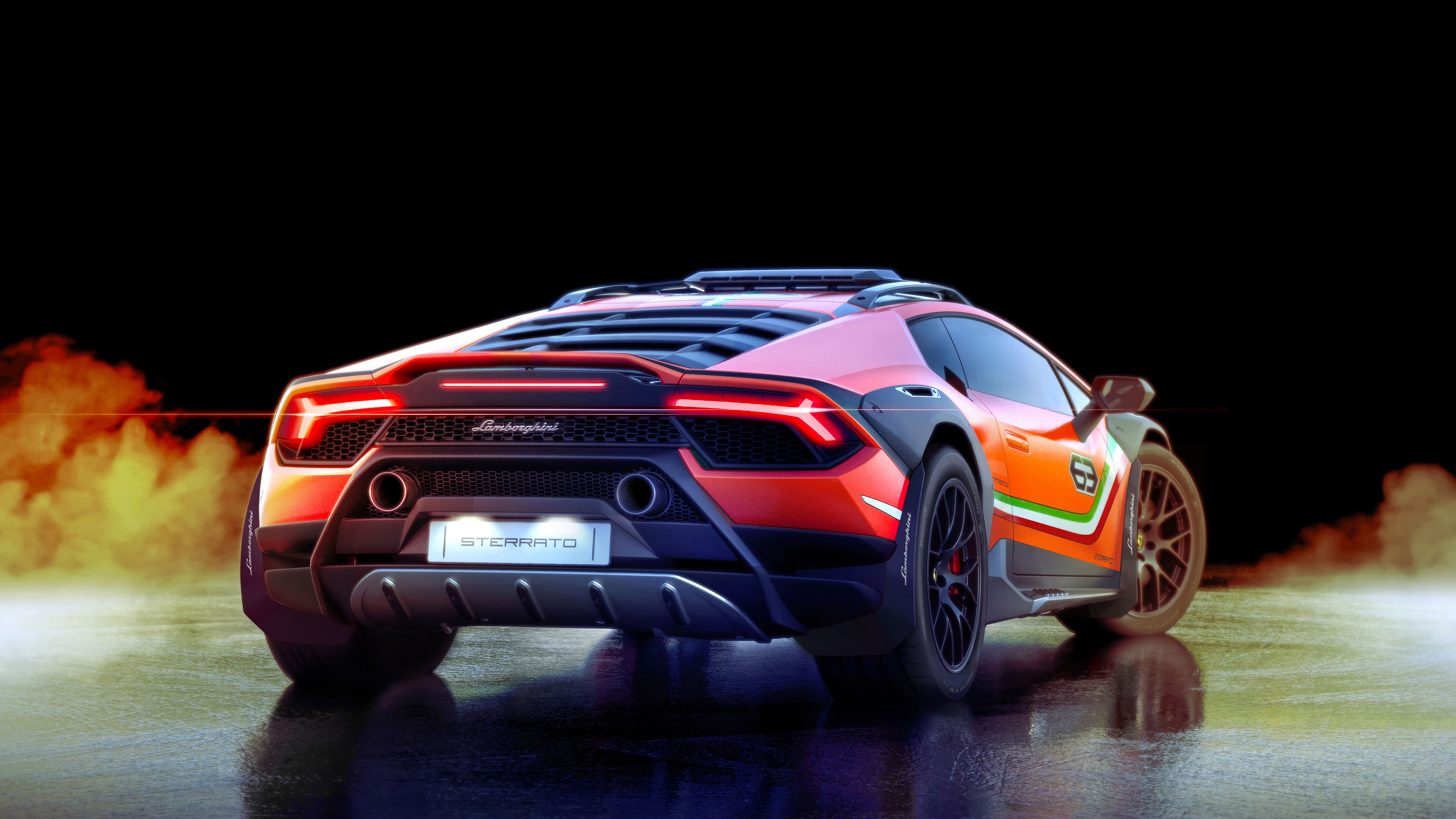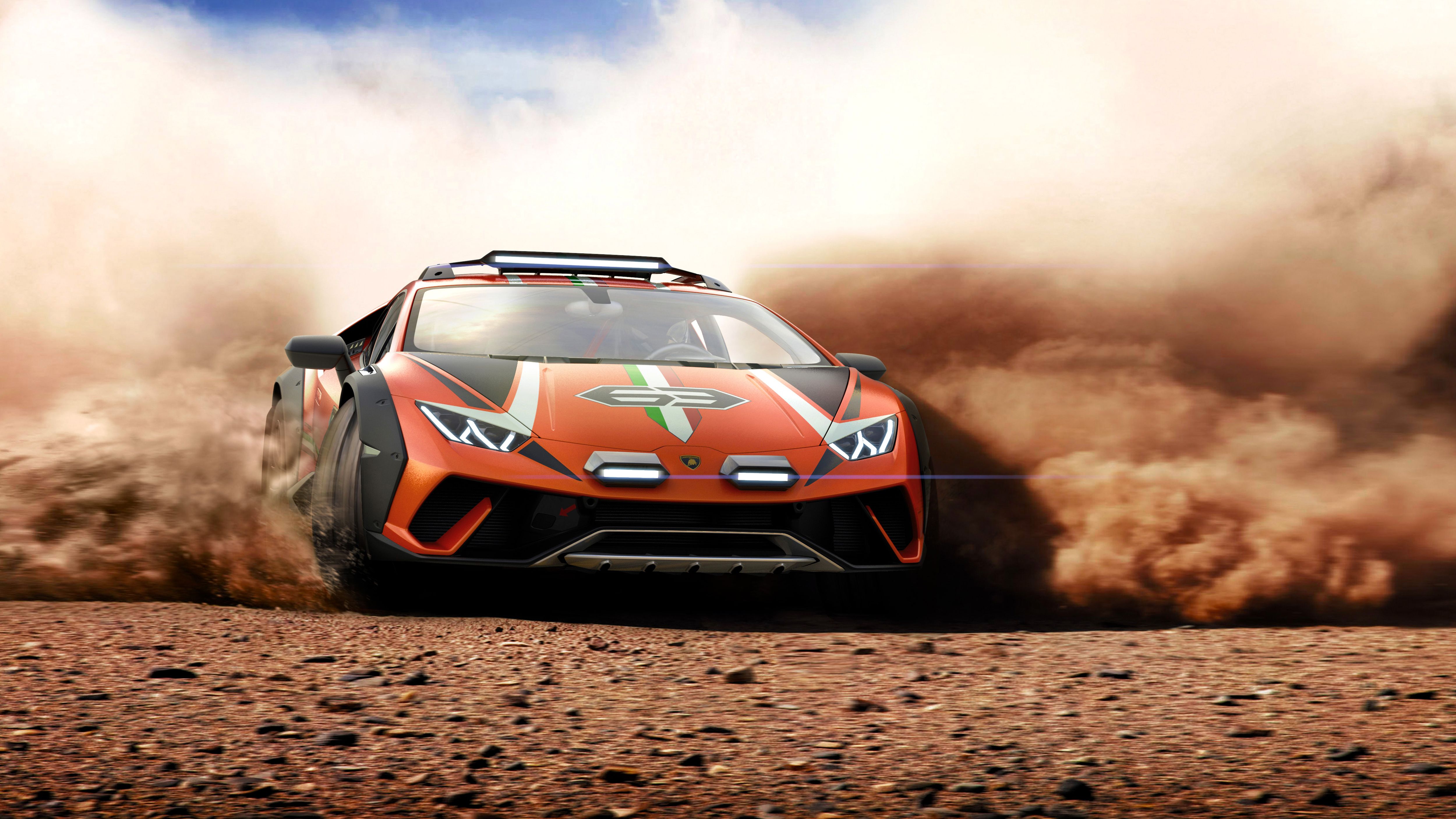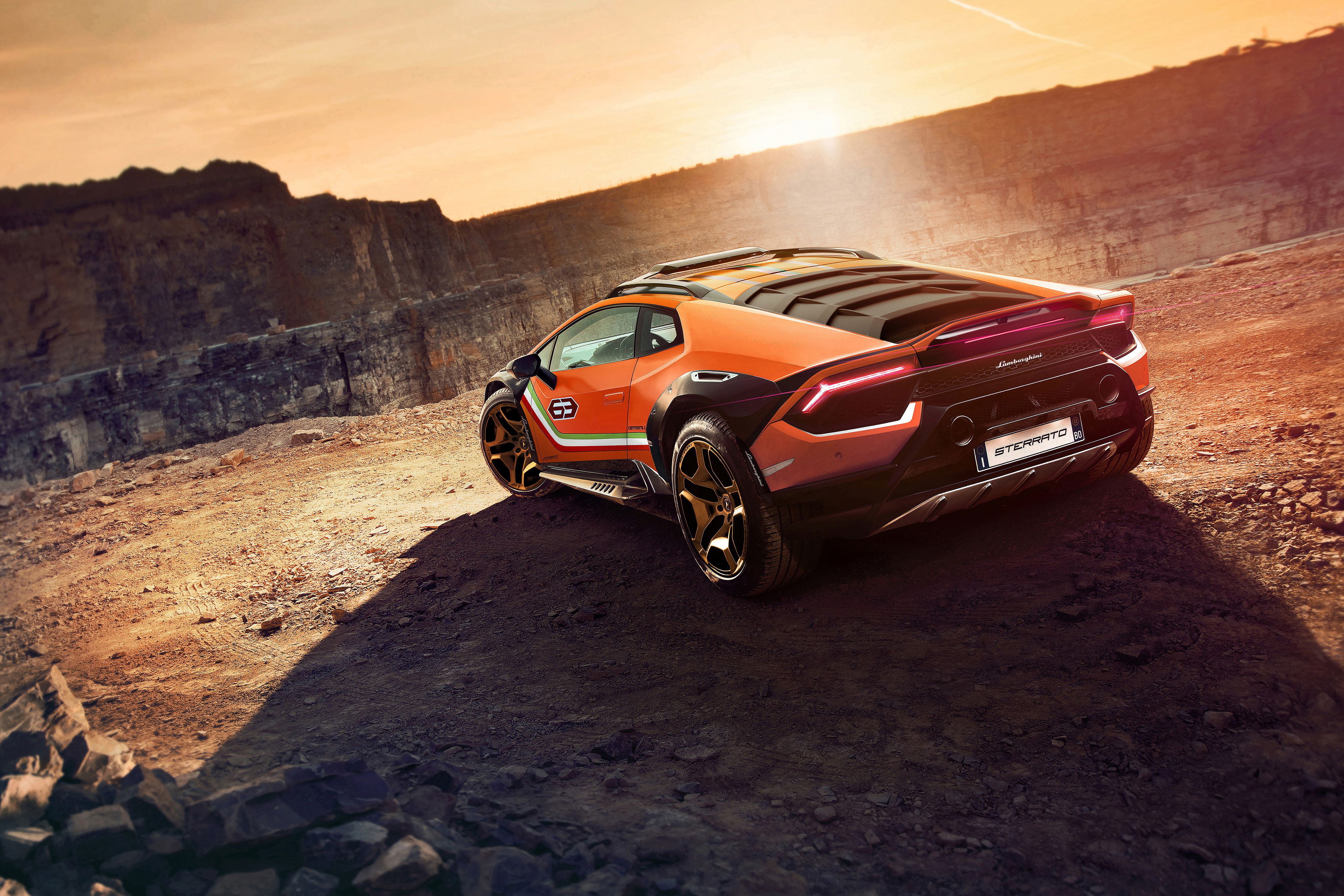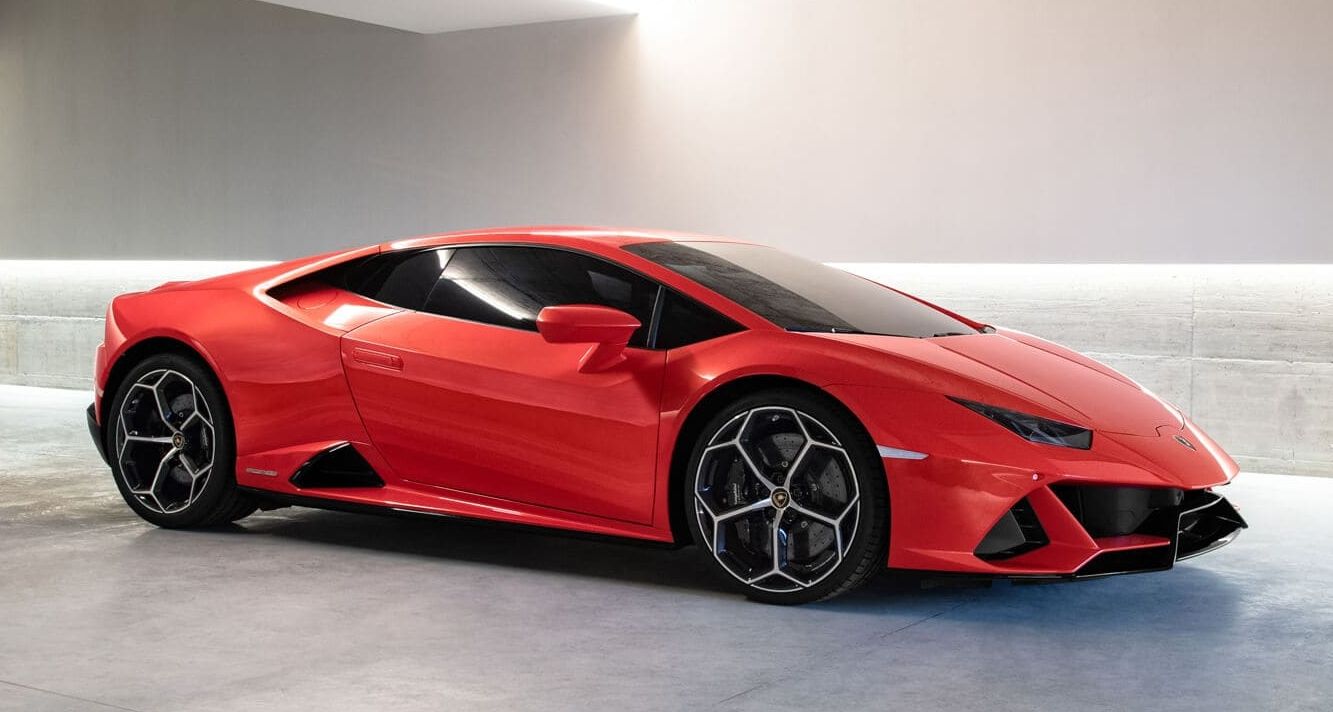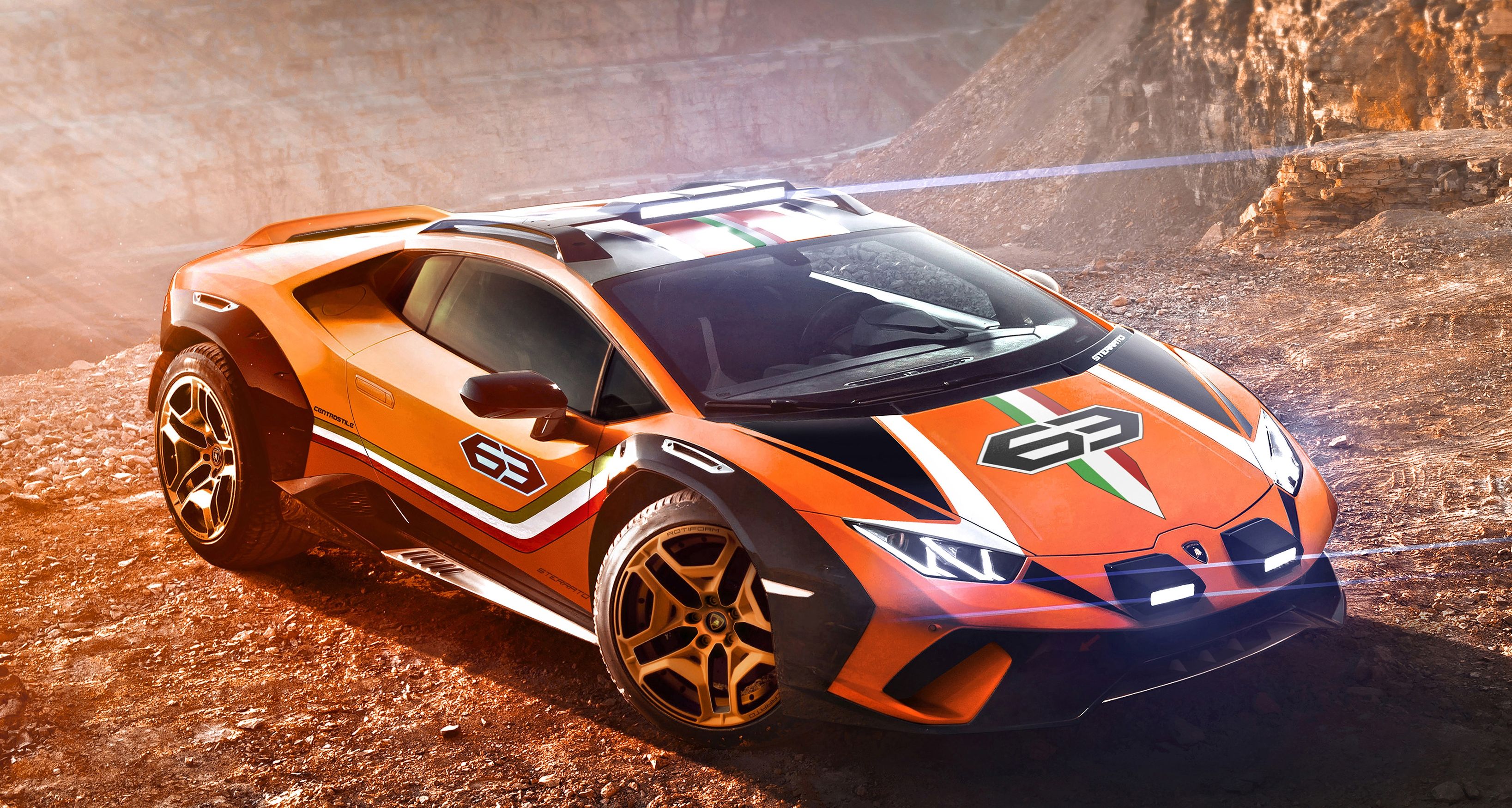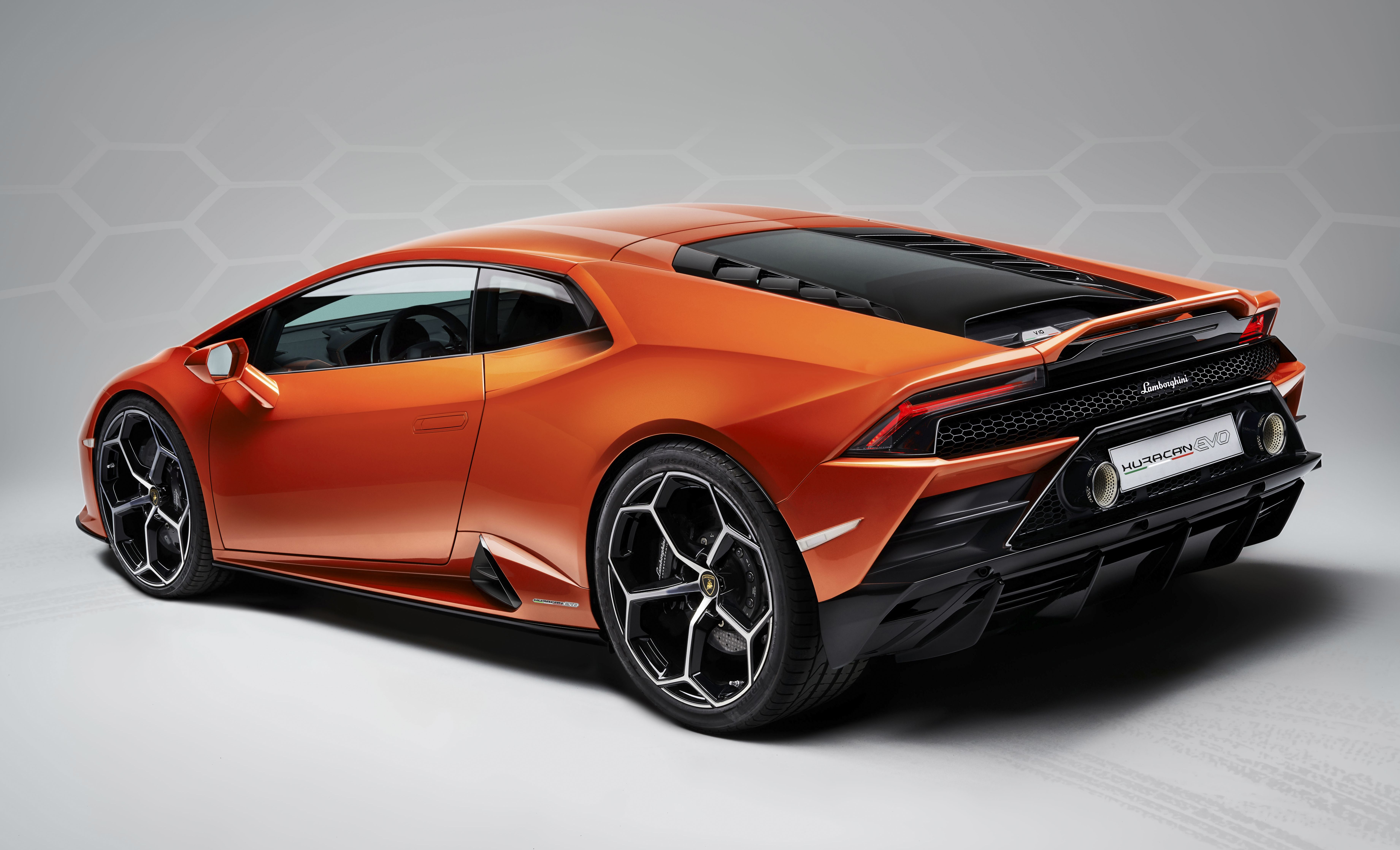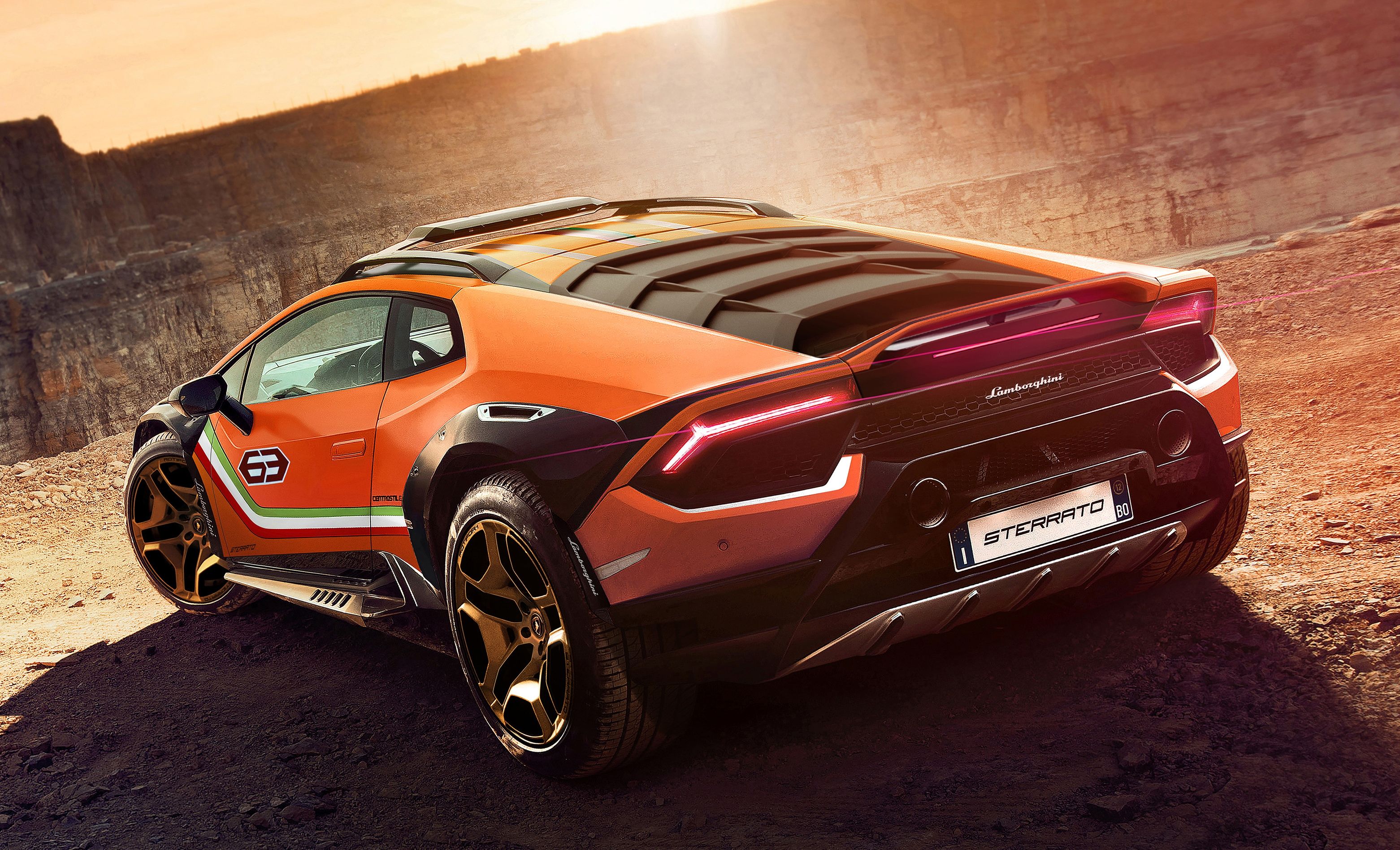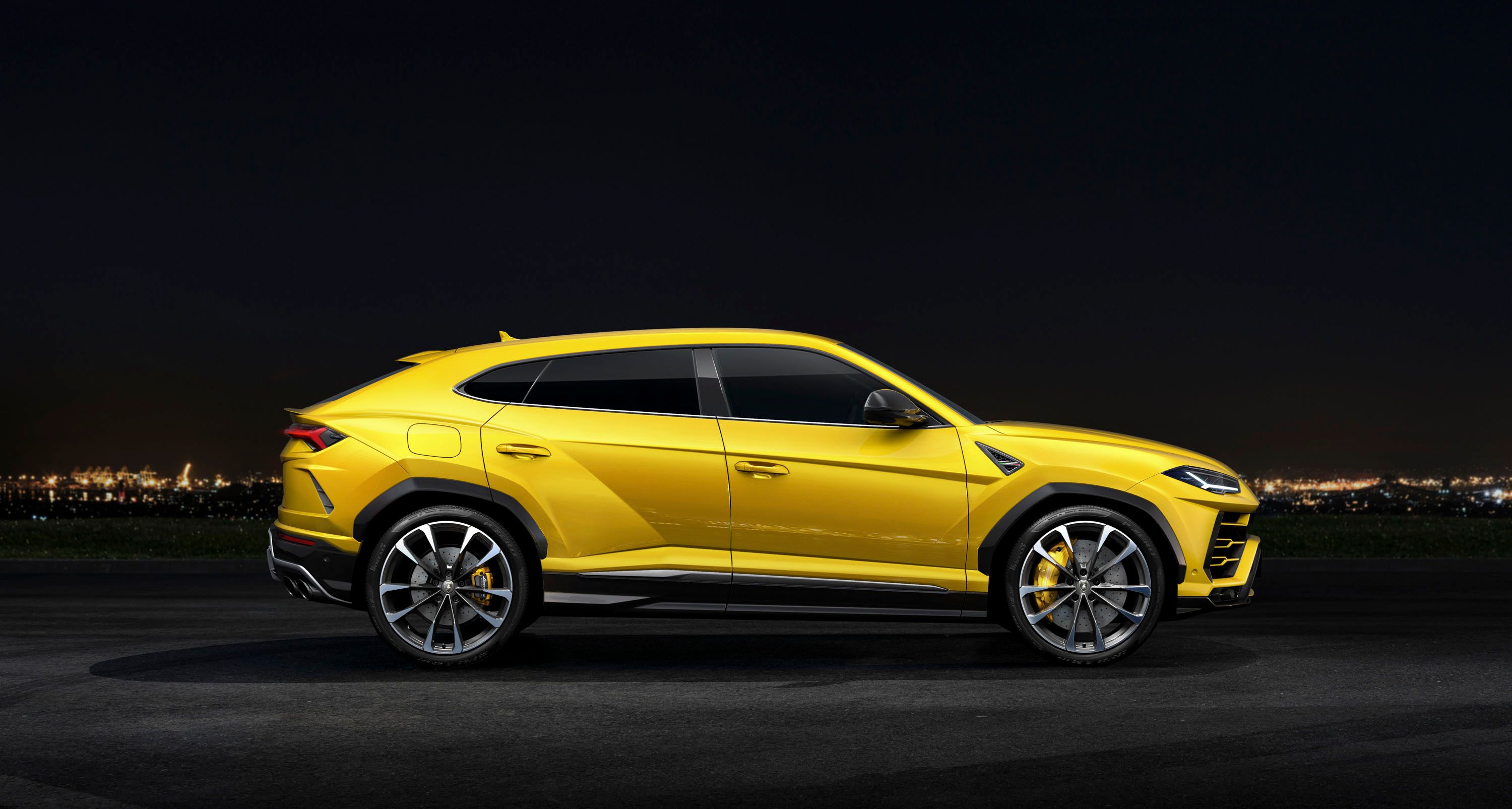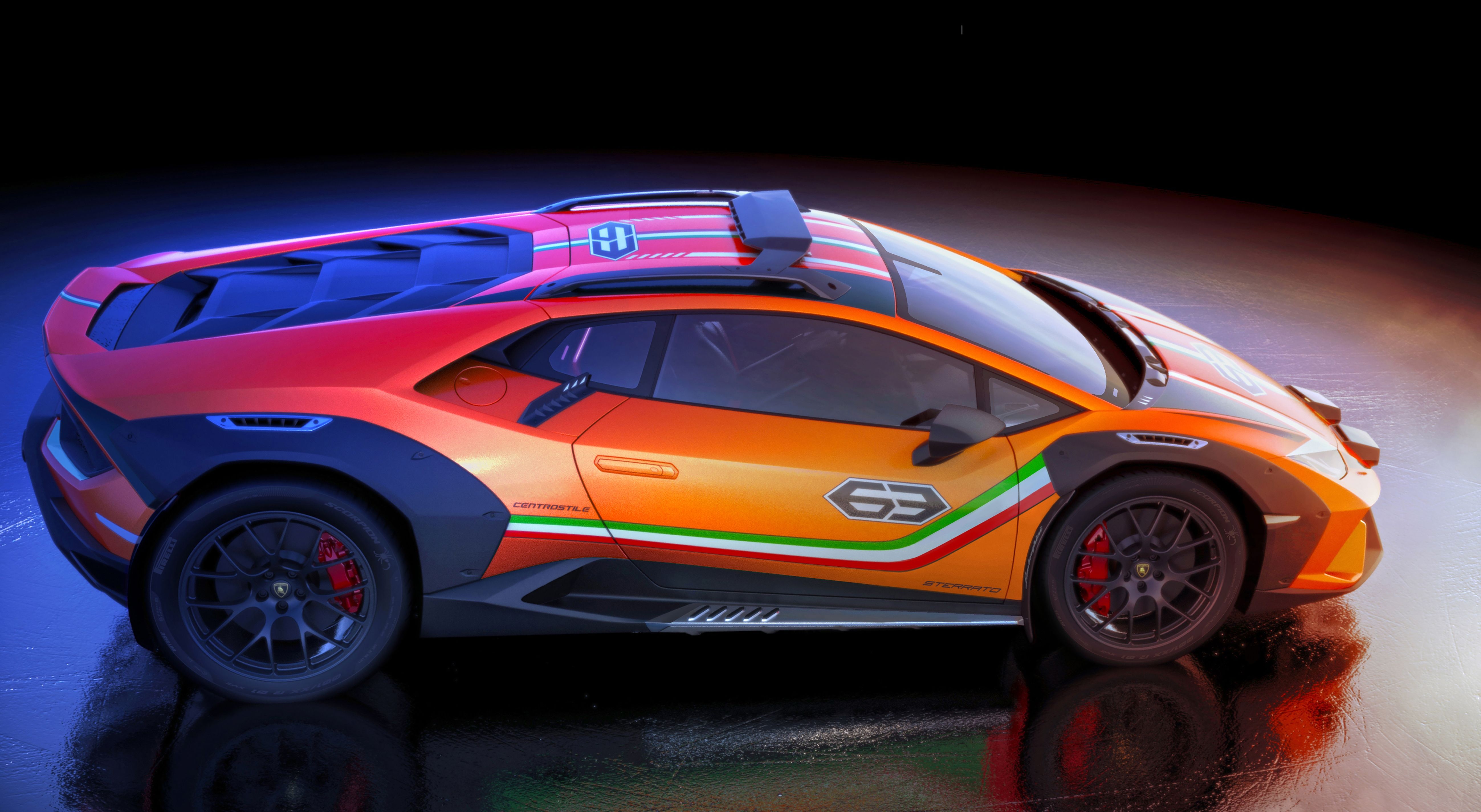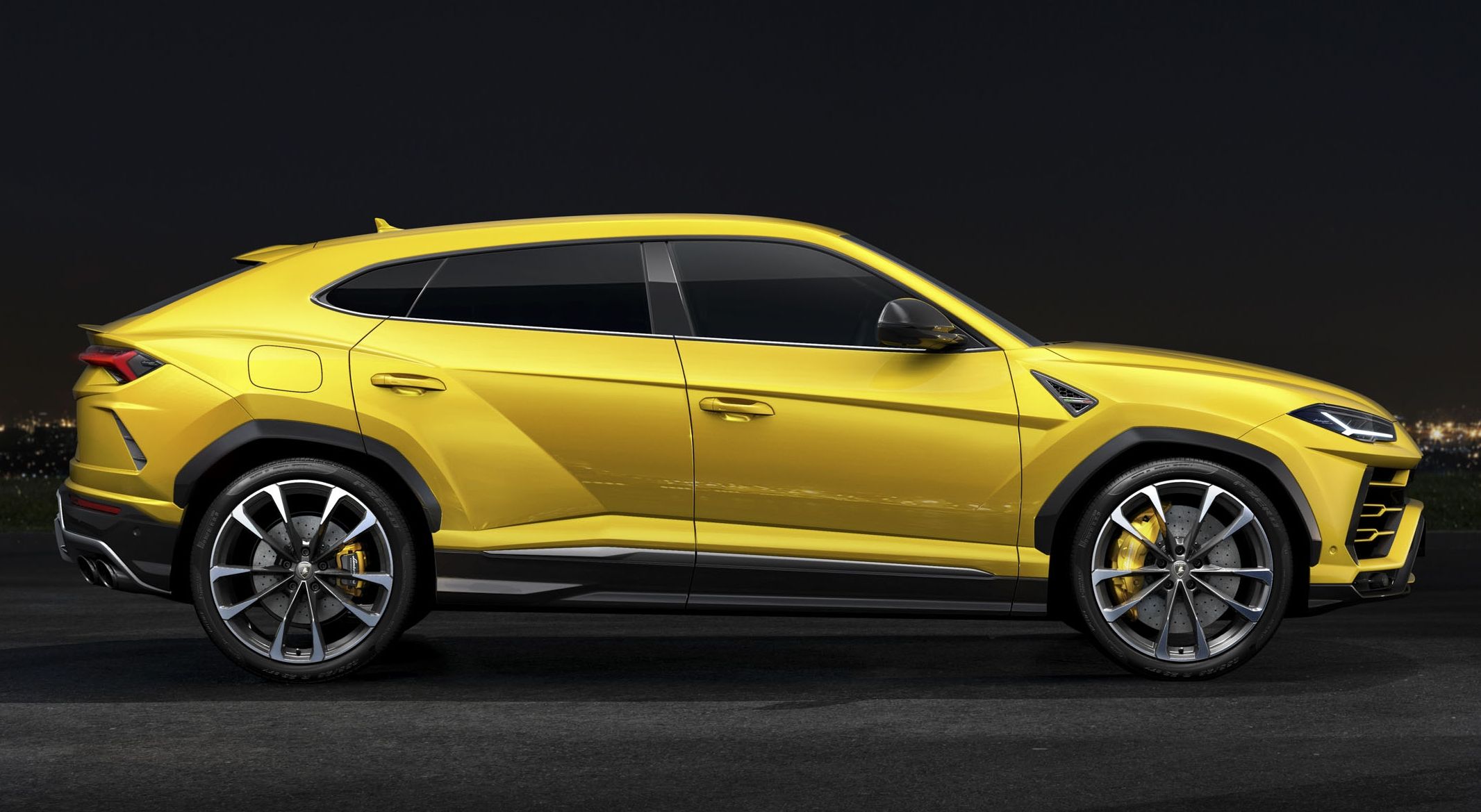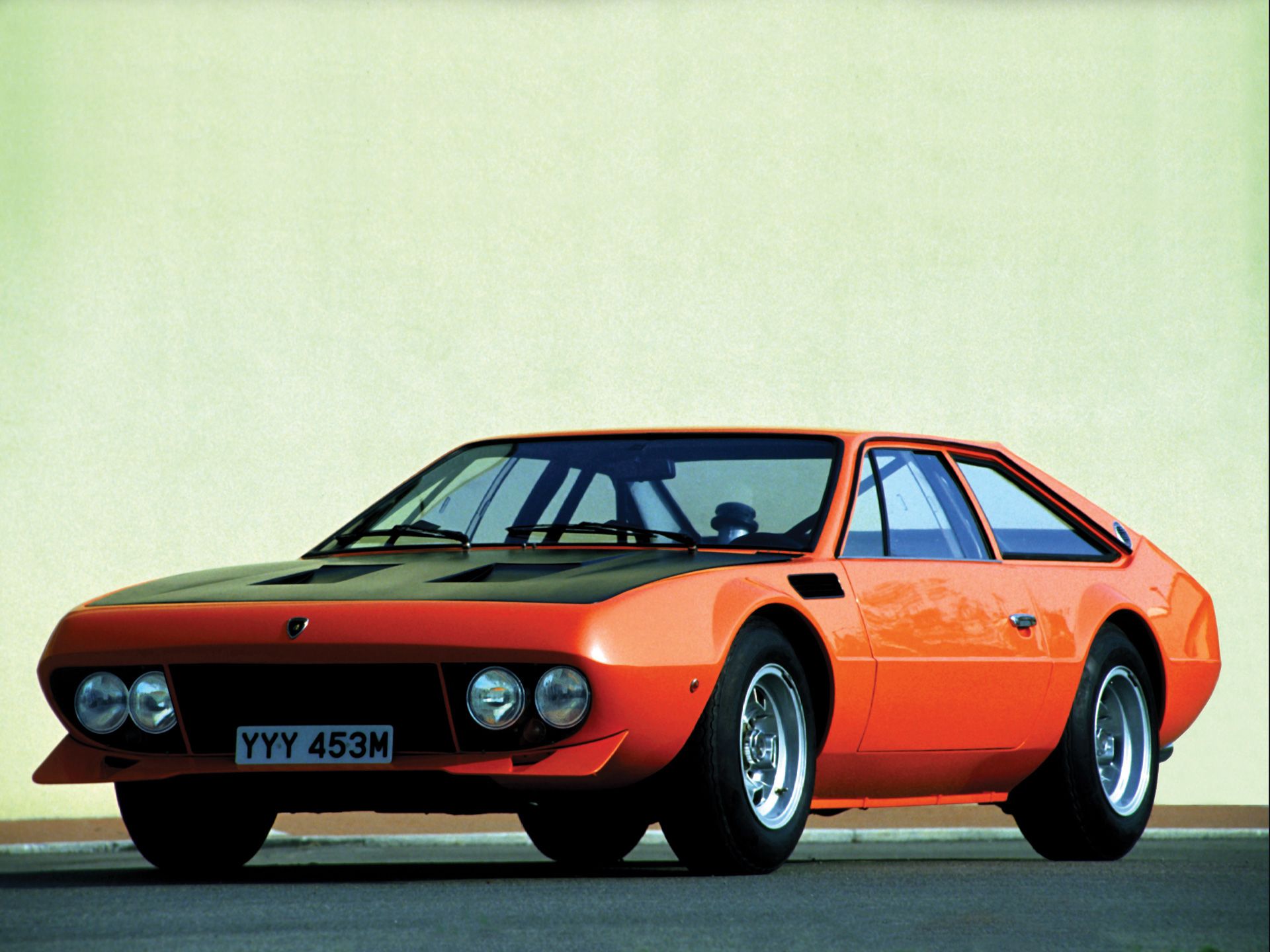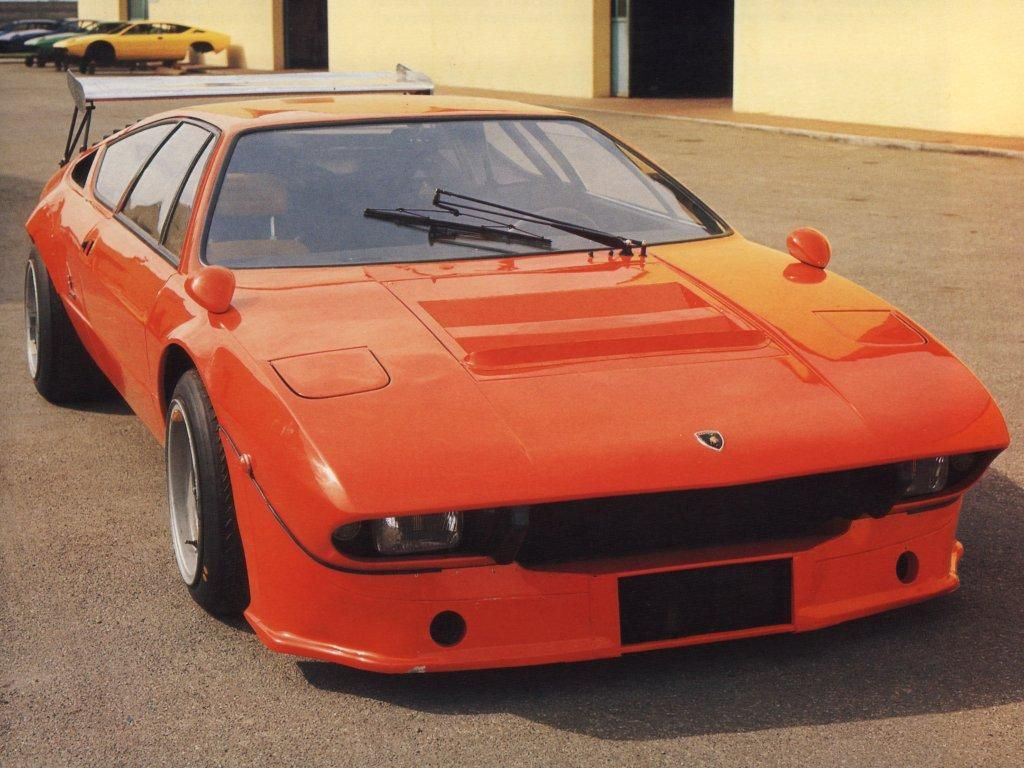The 2019 Lamborghini Huracan Sterrato is an experimental concept car that the Italian firm launched in June 2019. As the name suggests, the Sterrato is based on the 2019 Huracan supercar, but unlike standard sibling it includes off-road-specific features and technology from the Urus SUV. Described as a "super sportscar for challenging environments," the Huracan Sterrato also pays tribute to similar experimental vehicles from Lamborghini's storied past.
The 2019 Huracan Sterrato may be an usual vehicle for a company like Lamborghini, but it's not the first of its kind. Back in the 1970s, test driver Bob Wallace modified several production Lamborghini's to create unique performance cars. Two of them, the Jarama Rally (1973) and Urraco Rally (1974), featured off-road-specific suspensions and upgrades designed for rally racing. Almost 50 years later and Lamborghini is revisiting its off-road supercar legacy with the 2019 Huracan Sterrato.
2019 Lamborghini Huracan Sterrato
- Make: Array
- Model: 2019 Lamborghini Huracan Sterrato
- [do not use] Vehicle Model: Array
Exterior
Up front, we can a modified bumper with thinner side air vents. The center section remains similar to the regular Huracan Evo, but Lambo eliminated the rectangular elements at the bottom. The splitter was also changed and now features an aluminum skid plate. The regular Huracan LED headlamps are now backed by a pair of additional lights placed on the nose, on each side of the "Lamborghini" emblem. Both feature LED technology with flood function.
On the front hood, black and white graphics, an Italian flag (green, white, and red,) and the number 63 reminds that the Huracan Sterrato celebrates the year in which the company was founded, 1963.
|
|
ids=845737,845738> |
This Huracan stands 1.85 inches higher from the ground and rides on off-road-ready wheels
Move onto the sides and you'll notice two of the concept's most important features. First, this Huracan stands 1.85 inches higher from the ground. It might not sound like much, but it makes a big difference when combined with the larger tires. Wrapped around special 20-inch rims, these off-road tires have bigger side walls and improved asperity absorption and grip.
To accommodate these tires, but also to give the Huracan an off-road-ready look, Lambo added massive wheel arch extensions.
|
|
ids=845739,845740> |
The front and rear wheel arch extensions are connected by bespoke aluminum side skirts that are also wider than usual. They look more like side steps from a pickup truck, but they go well with the overall design. Both wheel arches also come with mud guards, but they're not made from rubber like those on mundane vehicles. Instead, Lamborghini went for a fancier composite made from carbon-fiber and elastomeric resin.
More unusual stuff can be noticed on the roof. Unlike the regular Huracan, the Sterrato sports roof rails and a wide LED projector on the front section. The profile also features a horizontal Italian flag and the number 63, just like the front hood.
The rear of the Sterrato isn't that different compared to the original car. The only notable change here is the diffuser, which was replaced with an aluminum skid plate. Sure, it still mimics the shape of the original diffuser, but the vertical fins are much smaller and it's probably not as effective.
|
|
ids=845741,845742> |
Interior
Lamborghini didn't release photos of the Sterrato's interior, but it did say that it has a special trim that "echoes its off-road character." The Italians also mention a pair of new carbon-fiber sports seats with a dual shell design and four-point seatbelts. It also features aluminum floor panels instead of the usual soft mats made from Alcantara or similar materials. The Sterrato's cabin is rounded off by a lightweight, titanium roll cage for increased safety when driving off the beaten path.
Drivetrain
The concept car shares all of its underpinnings with the latest Huracan Evo. So while the Urus features a twin-turbo, 4.0-liter V-8, the Sterrato sticks to the Huracan's naturally aspirated, 5.2-liter V-10.
But despite being less powerful, there's a big chance that the Sterrato is quicker than the Urus. Lambo has yet to announce performance figures, but the Sterrato shouldn't be much slower than the Huracan Evo. The latter charges to 62 mph in 2.9 seconds, so it's safe to say that the Sterrato gets there in around 3.1 clicks. That's a half-second quicker than the Urus.
The concept car is equipped with the Lamborghini Dinamica Veicolo Integrata (LDVI) system that the Italians introduced on the Huracan EVO. Fitted with predictive logic, it controls the Sterrato’s main systems, including four-wheel drive, four-wheel steering, suspension and torque vectoring. LDVI anticipates the driver's next moves to improve driving dynamics.
The Huracan's chassis was extensively recalibrated for off-road driving, but the concept retains the sporty dynamics of the supercar. All told, while it may be a bit more capable than the standard Huracan, the Sterrato probably isn't as capable as the Urus.
Previous Off-Road-Spec Lamborghinis
The Huracan Sterrato isn't the first vehicle of its kind. Back in 1973, Lamborghini test drive Bob Wallace, who also created the iconic Miura Jota, built a one-off version of the Jarama for racing. While its purpose was actually more track-oriented, the Jarama Rally had a somewhat high ground clearance and would have been suitable for rally racing too. The Jarama Rally had quite a few extras, like a stiffer body and chassis, a steel roll cage, center-locking wheels, and race-spec shock absorbers. Sadly, the Jarama Rally didn't go into production, with just one prototype surviving Wallace's off-the-record efforts.
One year later, in 1974, Wallace converted a Lambo Urraco to Rally specs. Based on the early P250 trim, the Urraco Rally also featured a roll cage, but it had many convenience features removed in order to save eight. The rear seat was ditched as well, which turned the Urraco from a 2+2 seater into a two-seat vehicle. Just like the Jarama Rally before it, the Urraco rally featured adjustable shock absorbers, enhanced brakes, custom wheels, and a heavily modified body with wider fenders and a rear wing. Wallace actually took this car racing at the Misano, but the project was soon abandoned.
Granted, none of these cars had the off-road capability of the Huracan Sterrato, but Lambo quotes them as an inspiration for the 2019 concept car.
Final Thoughts
The Huracan Sterrato is an interesting idea, mostly because it takes the Huracan to the next level by giving it off-road capability. Granted, it's not very practical and it won't go into production anytime soon, but it's good to know that Lamborghini has the ability to turn a track-ready supercar into a vehicle that can tackle the great outdoors while retaining its track capability. Maybe the fact that Lambo is venturing into uncharted territory means that it will join other markets and niches soon enough.

